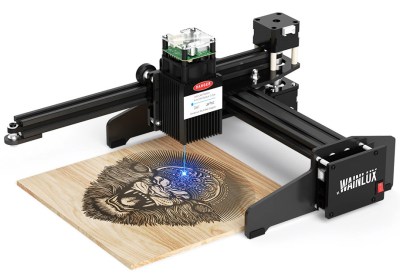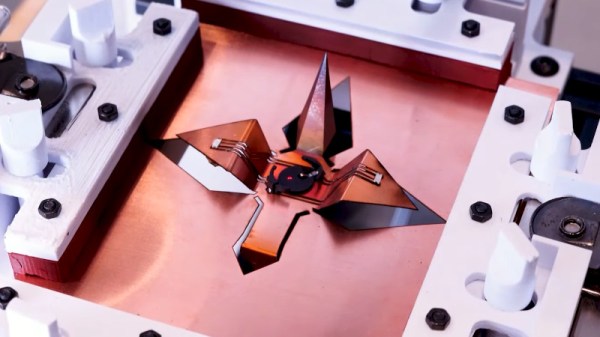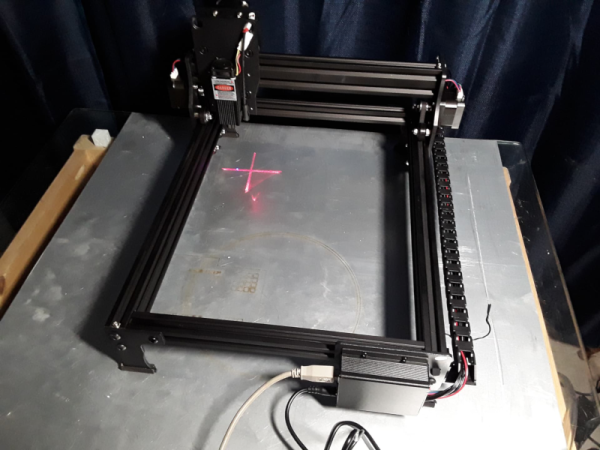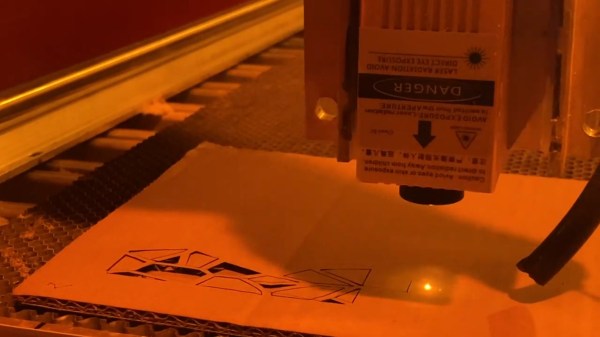Have you ever heard of Fordite? It was a man-made agate-like stone that originated from the Ford auto factories in the 1920s. Multiple layers of paint would build up as cars were painted different colors, and when it was thick enough, workers would cut it, polish it, and use it in jewelry. [SheltonMaker] uses a similar technique to create artwork using a laser engraver and shares how it works by showing off a replica of [Van Gogh’s] “Starry Night.”
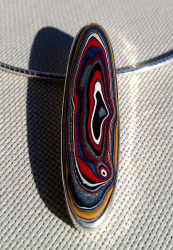
The technique does have some random variation, so the result isn’t a perfect copy but, hey, it is art, after all. While true Fordite has random color layers, this technique uses specific colors layered from the lightest to the darkest. Each layer of paint is applied to a canvas. Only after all the layers are in place does the canvas go under the laser.
The first few layers of paint are white and serve as a backer. Each subsequent layer is darker until the final black layer. The idea is that the laser will cut at different depths depending on the desired lightness. A program called ImagR prepared the image as a negative image. Adjustments to the brightness, contrast, and gamma will impact the final result.
Of course, getting the exact power settings is tricky. The best result was to start at a relatively low power and then make more passes at an even lower power until things looked right. In between, compressed air cleared the print, although you have to be careful not to move the piece, of course.
There are pictures of each pass, and the final product looks great. If art’s not your thing, you can also do chip logos. While the laser used in this project is a 40-watt unit, we’ve noted before that wattage isn’t everything. You could do this—probably slower—with a lower-powered engraver.
Fordite image By [Rhonda] CC BY-SA 2.0.




